Bangladeshi Allotment - Hampton Court Palace Flower Show 2010
click here to see how the silver medal winning allotment was created
click here to see the tropical vegetables
click here for credits
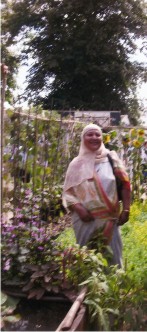
Bangladeshi Allotment is a representation of a little known
but unique style of sustainable tropical vegetable gardening practised widely in London by Bangladeshi lady gardeners.The
garden publicizes the negative effect of global development on subsistence horticulture - both in Bangladesh (due to increasing
monsoon flooding) and in London (where 1000 idyllic allotments were unecessarily removed to make a footpath in the bland Olympic
park).
The Bangladeshi gardening practices are radically different to English methods and much more productive.They are
an adaption of tropical Bangladeshi rural growing techniques to the English climate and urban land pressure .
The Bangladeshi allotments in London permit a nostalgic escape from small flats back to Bangladeshi rural culture. They
provide the outdoor meeting place for Bangleshi ladies (that they are used to in Bangladesh) enabling them
to socialize with english gardeners. And they are a continual source of fresh tropical vegetables that would otherwise
be air-freighted to Bangladeshi shops.
The solution the ladies have developed (over many years) crams tradional
Bangladeshi gardens into tiny London plots using giant ramshackle structures made of branches and framing foraged
from London skips (drawing on the foraging of bamboo from the forests in Bangladesh). They use a deep mulch of fresh
leaves and green waste to fuel their rampant tropical plants.
All our show plants are vegetables and most are tropical
and grown from saved seeds (because they are not available commercially in the uk). These unusual tropical vegetables are
unlikely to have been seen together befor in a UK show. Most will be completely new to the non-asian public.
click on the next photograph to enlarge it full screen 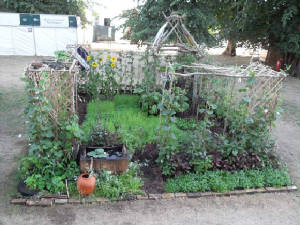
Our Bangladeshi Allotment is a stylized, manicured version of typical London Bangladeshi
allotment because authentic ramshackle structures were not considered by RHS to be of show quality.
So to obtain
design sign-off from the RHS we proposed adapting a Bengali allotment within historic stereotypes of
western garden design: particularly the neoclassical potager. We argued this was appropriate to the location at
the palace gates. But we have constructed it Bangladeshi style from urban detritus. Foraged branches and
framing support tropical climbing beans, gourds and cucumbers, with a parterre and edging of coriander, mustard
greens and amaranth and a junk heap of euclidean containers
To emphasize our neoclassical reference, inside the
garden is a replica of Laugier's iconic 'hut' in living willow, man's first house, converted into a Bangladeshi
shed or 'doogie house'. But Laugier conceived this hut as a condemnation of the indulgence of the baroque style of
the palace and of degenerate design (which was still much in evidence at the show and even rewarded with medals by the RHS)
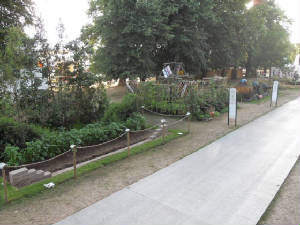
The gates of the Palace are at the end of the main path.
The Bangladeshi Allotment is set within
the five sustainable show gardens. Unlike the others it is a true garden - working and productive.
Our garden is
a solemn space, modelled on traditional woven bamboo enclosures, and intended for reflection about the threats to
global sustainability.
But in one corner we include a group of sunflowers as an optimistic note and to echo
the Bangladeshi government's promotion of sunflowers as a crop
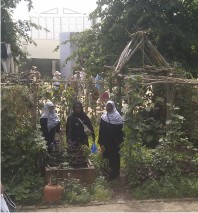
Three Bangladeshi lady gardeners standing at the entrance to their garden
behind their beautiful vegetables on the final day of the show.
They are framed by giant gourds and tropical cucumbers
In front of them is a prized lab-lab (hyacinth) bean in full bloom (later to be stolen immediately the show finished)
and in the rusty water tank is a white lotus (the most magical of all vegetables)
At their feet is an edging of
coriander in full flower (at its strongest buzzing with insects and ready for harvesting) and some special climbing spinach
next to a rhubarb forcer blanching edible bamboo shoots.
Behind them is a parterre of mustard, fenugreek and coriander.
To the right is a beautiful border of amaranth (or doogie) with an edging of young green coriander. Suspended
from the gourd structure in mid-air above this is a hanging basket containing peanuts (ground nuts) in flower
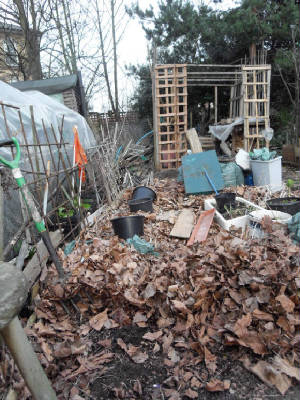
A typical London allotment plot in January with
a one foot thick mulch of dead leaves to fuel the following years vegetables.
Tropical vegetables like gourds need a
very rich open soil.
The leaves are supplemented by fresh grass cuttings in the spring to create a good balance of nitrogen
to carbon.
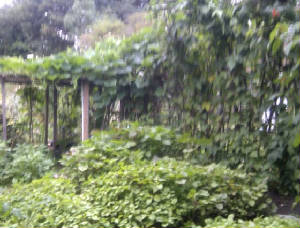
A typical Bangladeshi allotment
plot in London in July with every square millimetre cultivated:
there is a 2 metre high structure to support bottle
and serpent gourds and Chinese pumkins and towering 3 metre high screens of branches for lab-lab beans
The ground
is completely covered with geometric beds of coriander, fenugreek, mustard, radish and amaranth (dougie) all sown direct into
the soil with minimal paths
The Bangladeshi ladies use estate agents boards for many functions within their plots.
Most conspicuously to support the giant gourds on the structures, but also as windbreaks and to cover the germinating coriander
and amaranth seed sown directly onto the soil.
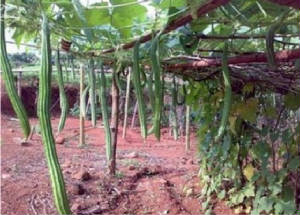
Typical gourd structures in Bangladesh with horizontal strings supporting snake
gourds running between vertical frameworks of branches.
In Bangladesh, growing space is unlimited and the growing season
is very long resulting in enormous vines. Below the gourds between wide paths, the space is often filled with amaranth until
the gourds form a dense canopy. In this case the amaranth has been harvested and the ground is bare.
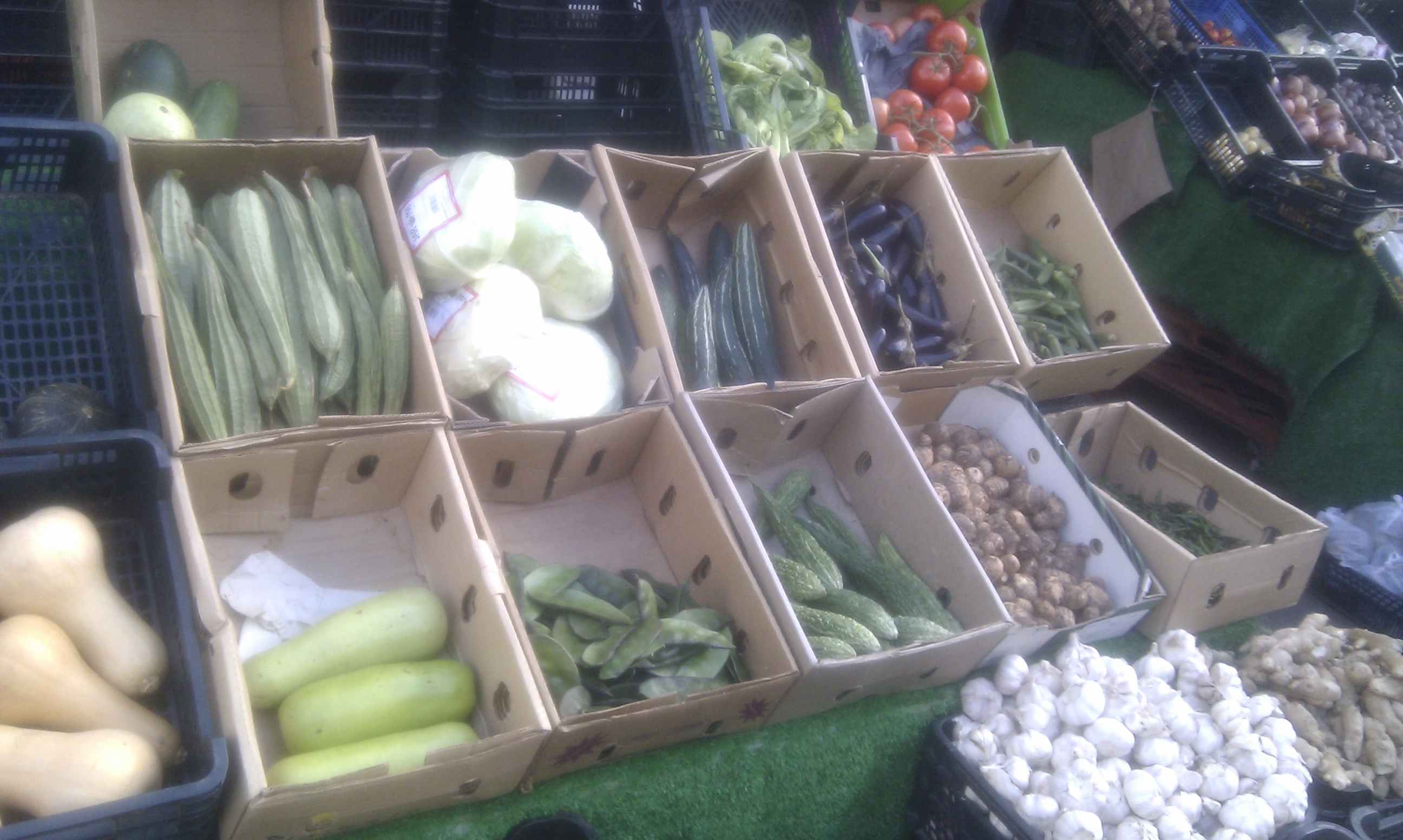
Air-freighted tropical vegetables for sale in a local Bangladshi
grocers in London
Long top row from left
Asian pumkin, Lufas (ridge gourds), cabages, Snake gourds, Asian aubergines,
Okras - with tomatoes and greens above
Long bottom row from left
Butternut squashes, Bottle gourds (moulis), Lablab
beans, Bitter gourds (balsam pears), Yams, Chili peppers - with garlic and potatoes below
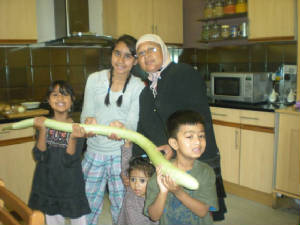
Mrs Khanom and her family in the kitchen of her London flat with one of the many serpent
gourds from her plot (before using it in a delicious curry)
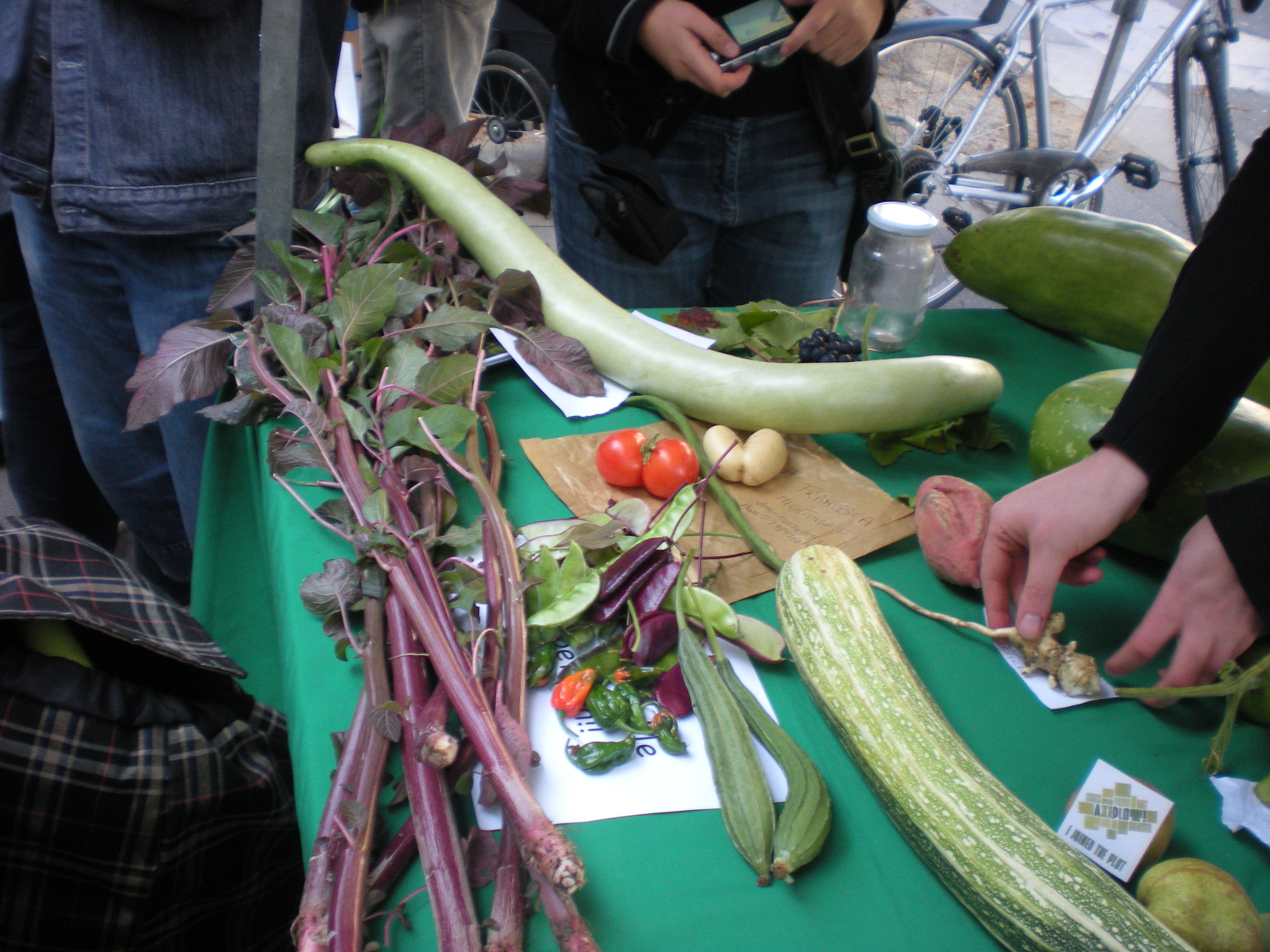
Mrs Khanom's tropical vegetables at the local vegetable show
causing much public interest and some confusion amonst the judges.
To the left is amaranth (doogie) the stems of which
are peeled and cooked
In the foreground are ridge gourds (young lufas) and lab-lab beans
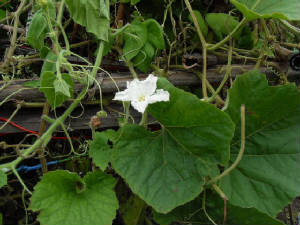
A bottle gourd in flower on a London allotment plot. The white flowers
distinguish them from squashes which have yellow flowers.
All parts of the plant are used for cooking: fruit, flowers
and shoots
Click on the picture to see more Bangladeshi vegetables and how to grow
them
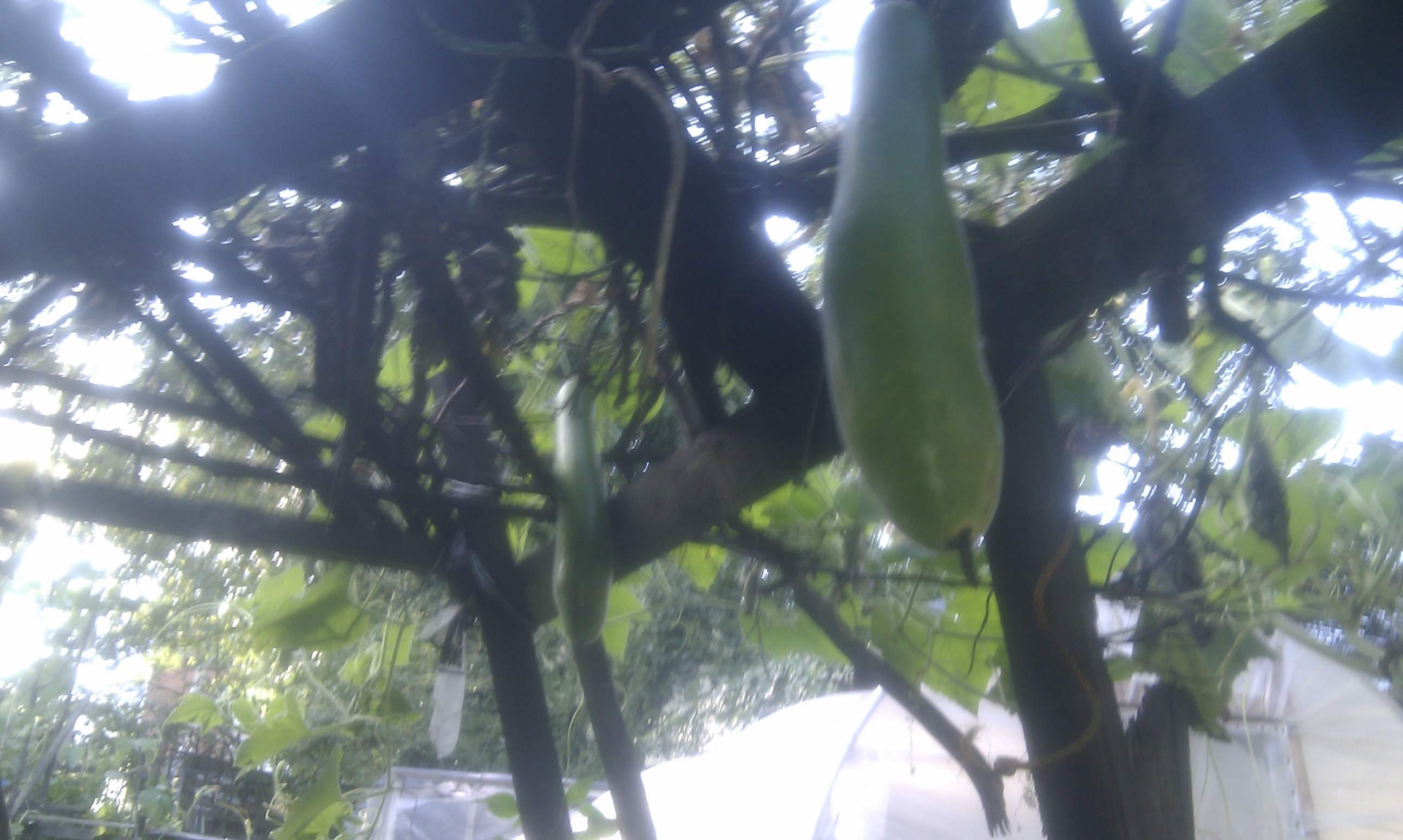
Bottle gourd and serpent gourd fruits hanging from gourd structure
on London allotment

One of the five giant tower blocks in which many of the Bangladeshi
lady gardeners live. Many of the vegetables were propagated from saved seed on the window sills of the flats
|